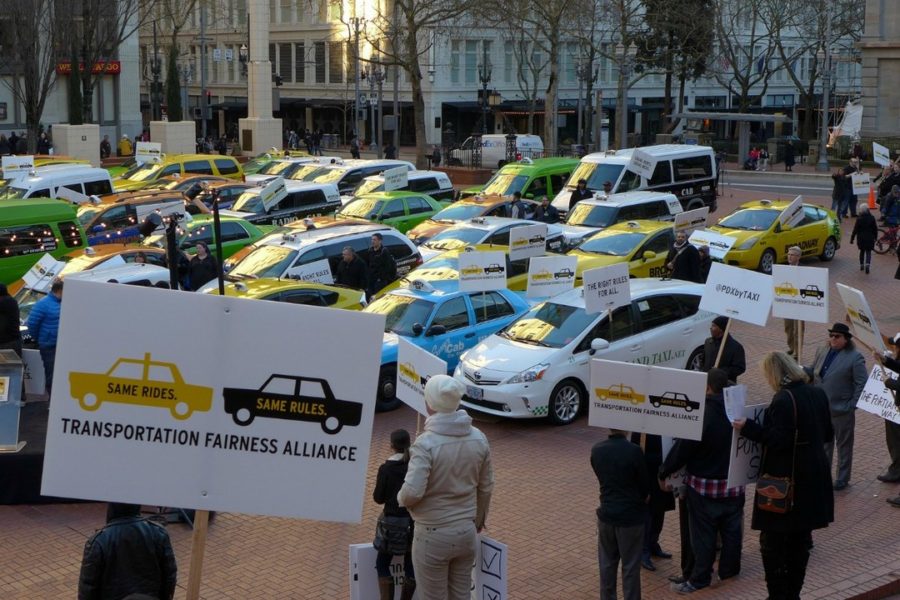Transportation Network Companies, or TNCs, have significantly transformed the transportation system. Companies like Uber, Lyft, and Via have provided an alternative way of getting to a destination simply with the use of a smartphone. You can call a ride, and know exactly the price of the ride, the time it will take to get to a destination and pay for the ride directly from a credit card. However, TNCs have disrupted the traditional taxi cab infrastructure, resulting in pushback from both TNC and taxi cab drivers and local leaders. Just a couple of days ago, New York City passed a set of regulations that caps the number of TNC drivers and allows the city to set a minimum pay on drivers.
TNCs have touted their benefit to providing access to underserved communities. A study by Securing America’s Future Energy showed that middle-class households have been found to use TNC services three to six times more than they had previously utilized taxi services. The analysis showed that since 2009, for-hire ride services (which includes both taxis and TNCs) saw nearly a 100 percent increase in ridership from households with incomes below $10,000, a 200 percent increase for those between $25,000 – $50,000, and a 562 percent increase from those between $50,000 – $100,000 (there was a slight drop for those making between $10,000 – $25,000).
However, this finding plays against a potential issue with increased congestion from TNCs. Bruce Schaller released his study “The New Automobility: Lyft, Uber and the Future of American Cities,” which showed that TNCs have added 5.7 billion miles annually to the Boston, Chicago, Los Angeles, Miami, New York, Philadelphia, San Francisco, Seattle and Washington DC metro areas. Furthermore, instead of replacing personal car rides, TNCs are taking rides away from public transportation, with 60 percent of TNC users in urban areas in California saying they would have taken public transportation, walked, biked or not made the trip if TNCs had not been available for the trip. Schaller also notes that pooling services such as UberPool and Lyft Line do not offset the increased congestion stemming from private ride services like Uberx and Lyft. This happens because riders are switching from non-auto modes (public transit for example).
It is very much a Catch-22. TNCs have helped expand access to people who have had difficult access to transportation. I remember talking to a Lyft driver here in DC about this. In Southeast DC, which is predominantly African-American and one of the poorest and least accessible areas in the city, he told me that he has transported riders late at night that would have never been able to do so before because of the lack of public transit. However, TNCs have contributed to increased congestion in cities and despite their push to increase the share of pooled rides, may not mitigate traffic.
Is there a balance to improving equity and mitigating congestion? Maybe. I personally support the growth of TNCs to fill in the first-mile/last-mile gap, helping to connect people to high-capacity public transit, whether it be fixed light rail or high-capacity bus lines. Moving 600 people in a train or 40 people on a bus with dedicated right-of-way is more efficient than moving 4-5 people in a car. Some public transit agencies are already working with TNCs on such initiatives.
American cities have been notoriously underinvesting in its public transit systems. But that does not mean TNCs and the agencies can work together, along with our political leaders, to develop a transportation system that tackles congestion, yet provides better access for all users. If this is not a priority among all parties, the system will be more congested and less accessible – and that is not good for anybody.



